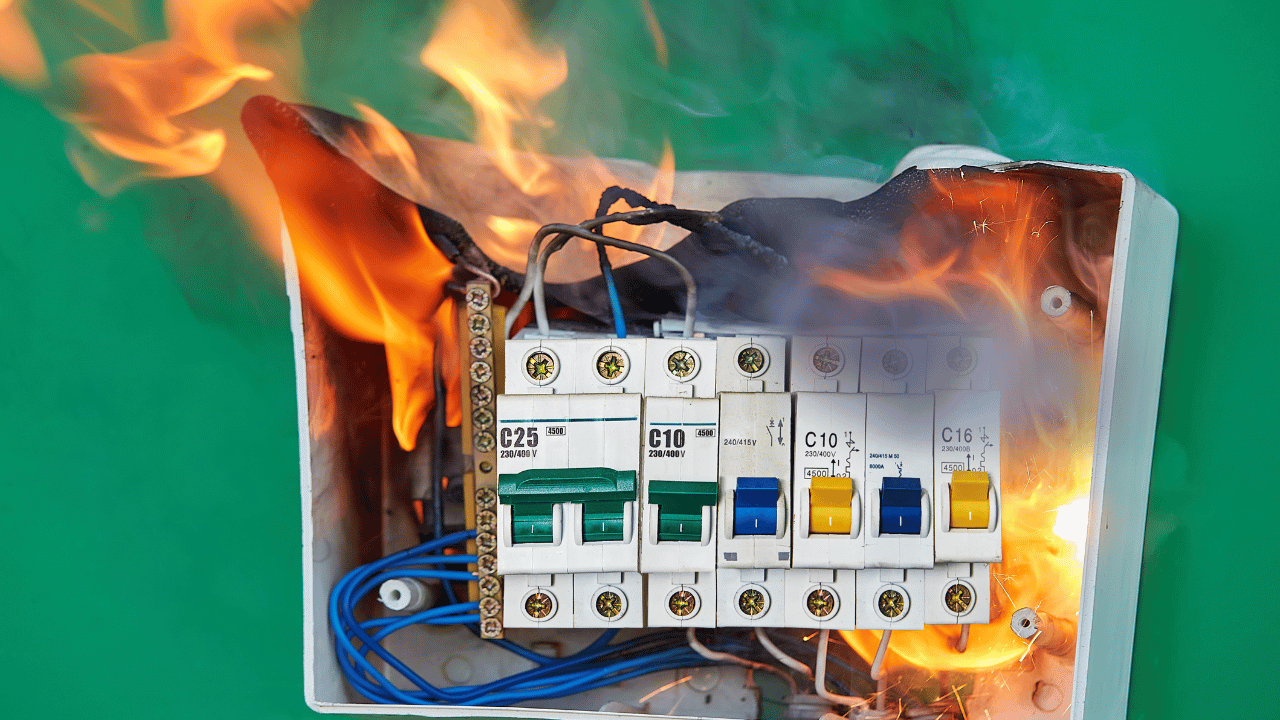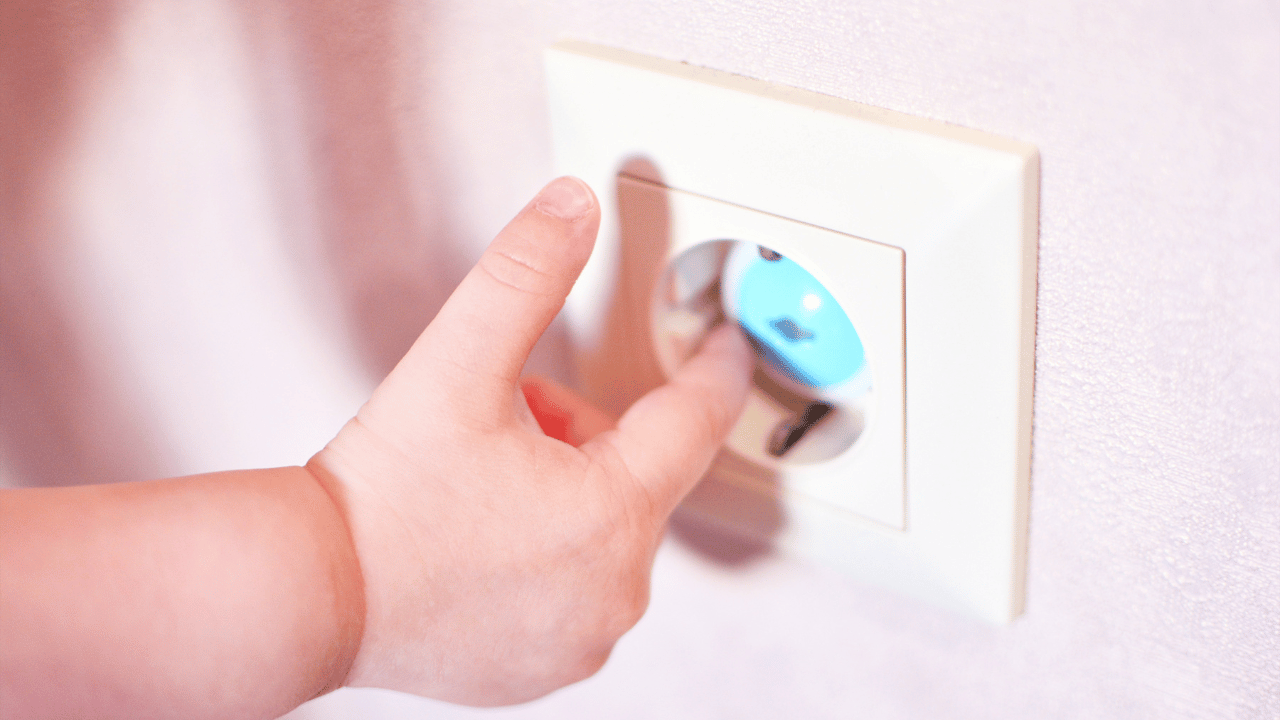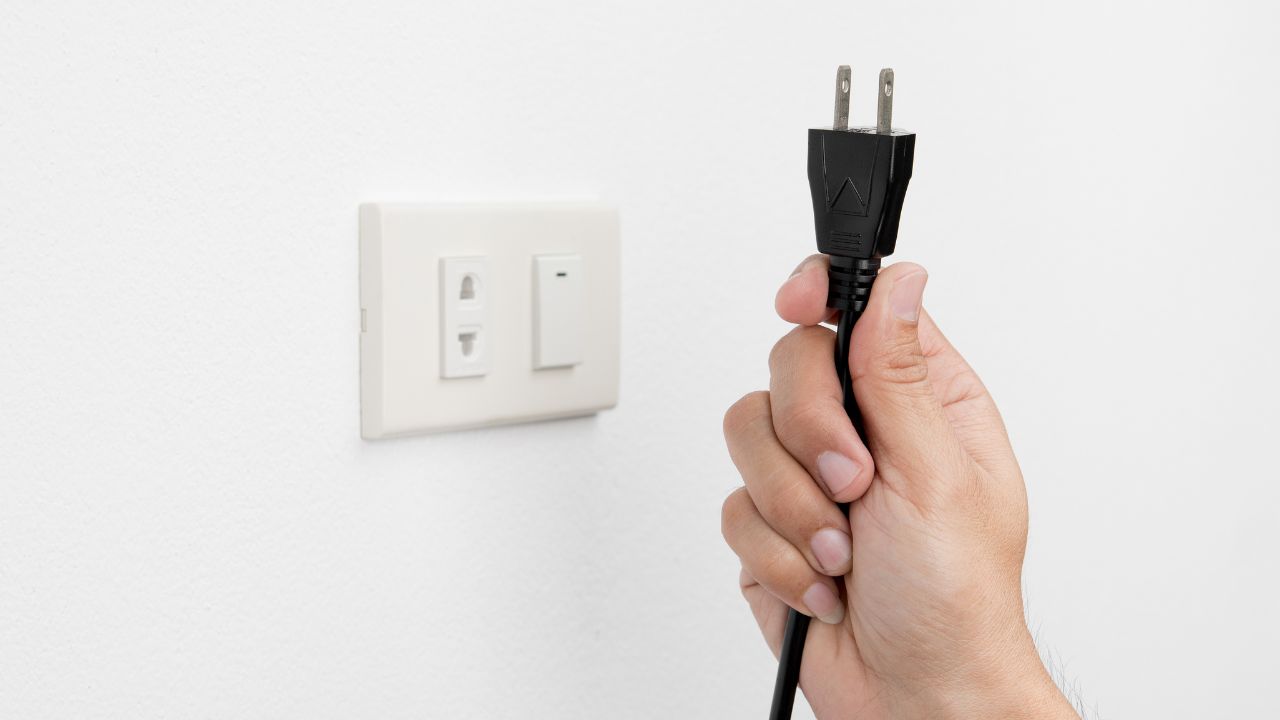Last Updated on October 21, 2023 by Pro Handyman Australia – Editorial Team
In our increasingly digital and interconnected world, our reliance on electronic devices has grown exponentially. From our homes to our workplaces, we are surrounded by gadgets and appliances that make our lives more convenient and efficient. However, the intricate web of circuits that powers these devices is not immune to issues, and one of the most common and potentially hazardous problems that can arise is a short circuit.
A short circuit occurs when an unintended connection is established between two points in an electrical circuit, bypassing the normal path that the current should follow. This can result in overheating, sparks, blown fuses, or even fire. While the thought of a short circuit might send shivers down the spine of many, the good news is that with the right knowledge and a methodical approach, short circuit issues can be resolved safely and effectively.
Welcome to our comprehensive guide on short circuit repair. Whether you’re a dedicated DIY enthusiast or someone who’s simply tired of being at the mercy of repair technicians, this guide will empower you with the understanding and skills needed to diagnose, troubleshoot, and fix short circuits in a range of electronic devices. We’ll delve into the fundamental principles of circuits, explore the common causes of short circuits, discuss the essential tools you’ll need, and provide step-by-step instructions to tackle these issues like a pro.
No longer will a flickering light, a malfunctioning kitchen appliance, or a finicky computer charger be a cause for panic. By the end of this guide, you’ll have the confidence to approach short circuit repairs with a calm demeanor, knowing that you can not only save time and money but also contribute to a safer and more efficient electronic environment.
So, whether you’re ready to roll up your sleeves and dive into the world of electronics or you simply want to expand your repair skill set, let’s embark on this enlightening journey of mastering the art of short circuit repair.

What is a Short Circuit?
A short circuit occurs when electricity unexpectedly diverts from its intended path through wires, opting for the shortest route to the ground. This can pose dangers, including damage to appliances, ignition of flammable materials, and risks to human safety. The phenomenon happens due to copper wires’ relatively higher resistance compared to other surfaces, causing electricity to flow through those surfaces instead.
Understanding the Causes of Short Circuits

Unwelcome Intruders and Deterioration
- One common reason for short circuits is vermin or pests. These creatures often chew through wires, compromising the electrical integrity of a home or building.
- Over time, electrical cable sheathing can deteriorate. This decline in the protective layer can expose wires, making them more susceptible to short circuits.
Environmental Factors and Accidental Damages
- The inadvertent introduction of water or other liquids to electrical wiring is a significant concern. Any moisture coming into contact with electrical systems can lead to a short circuit.
- Accidents happen. Sometimes, during home improvements or other projects, nails or screws might inadvertently pierce walls and touch electrical wires, leading to short circuits.
Equipment and Infrastructure Issues
- Loose connections within an electrical box can pose risks. It’s essential to ensure all connections are secure to prevent potential short circuits.
- Outlets, switches, lights, appliances, and other electrical devices can wear out or get damaged over time. When this occurs, they become potential culprits for causing short circuits.
Electrical Surges
- An unexpected build-up or surge of electricity can overwhelm a system and result in a short circuit. It’s crucial to have protective measures in place, like surge protectors, to guard against these unpredictable electrical influxes.
Differentiating Between Short Circuit Types
Normal Short Circuit
A standard short circuit occurs when a powered (often referred to as “hot”) wire comes into contact with a neutral wire. As a result of this contact, the resistance decreases sharply, causing the electrical current to divert to an alternative route.
Ground Fault Short Circuit
A ground fault short circuit is slightly different. In this scenario, a hot wire makes contact with a grounded part. This could be a section of an appliance, device, outlet, or even a bare ground wire. Essentially, any component connected to the electrical circuit that is grounded can be the point of contact in a ground fault short circuit.
Identifying a Short Circuit: Key Indicators

Immediate Device Shutdown
A clear indication of a short circuit is when all devices connected to the circuit stop functioning abruptly. Whether it’s a light, TV, computer, or any other device connected to that circuit, it will cease to operate because of the short circuit.
Breaker Interruption and Fuse Failures
Typically, a short circuit will result in the circuit breaker associated with it being triggered to its off position. If you’re working with an older system equipped with fuses instead of modern breakers, the fuse corresponding to the shorted circuit will blow. This interruption in power flow is the reason behind the sudden deactivation of devices.
Past Signs of Short Circuits
While short circuits often manifest unexpectedly, sometimes there are subtle hints of prior incidents. Observing charred wires or a light switch can be indicative of previous short circuit occurrences. Additionally, if you detect a peculiar metallic scent or the smell of burnt plastic or rubber, it might suggest a recent short circuit event.
Symptoms of Persistent Short Circuits
One undeniable sign of a short circuit is the habitual tripping of the circuit breaker. At times, this phenomenon might be accompanied by visible sparks, a bright flash of light, or even a pronounced zapping sound. There could also be an audible pop or boom when the short circuit happens.
When the short circuit occurs, devices drawing power from the affected circuit will halt operation. Ground Fault Circuit Interrupter (GFCI) outlets, designed for safety, will also deactivate.
Lastly, and most critically, if by chance your body becomes the medium for the short circuit, or if you are in contact with the malfunctioning device, you might experience an electric shock. In severe cases, this can cause burns due to the intense heat generated by the short circuit.
Repairing a Short Circuit: Step-by-Step Guide
One: Inspection and Location
Upon suspecting or confirming a short circuit, immediate action is crucial. Whether it’s a tripped circuit breaker or an overloaded circuit, addressing the issue promptly is vital. Repairing a short circuit involves two main phases, both of which require meticulous execution.
Inspecting the Tripped Circuit Breaker:
- Examine the panel to identify any switches in the “off” position—a sign of a tripped circuit breaker.
- Some systems have an orange or red light indicating a tripped circuit.
- Keep the specific breaker off while searching for other potential short circuits.
Checking Appliance Power Cords:
- Inspect appliances and power cords connected to the tripped circuit.
- Damaged insulation on cords can point to a short circuit.
- Safely unplug appliances, turn on the breaker, and see if it trips again. If not, the appliance might be the cause.
Testing Lights and Appliances:
- Turn off all lights and appliances.
- Turn the circuit breaker back on and observe.
- If the breaker trips immediately, turn on each light and appliance one by one to identify the culprit.
Two: Repair Work
Ensuring Safety and Gathering Tools:
- Prioritize safety throughout the repair process.
- Gather necessary tools: new wire, soldering gun, utility knife, soldering iron, and safety gloves.
Repairing the Short Circuit:
- Identify the exact location of the short circuit.
- Procure a new wire from a local hardware store, ensuring it matches the required length.
- Extend the new insulated copper wire to the proper length, cutting if necessary.
- Use a utility knife to strip insulation from the wire’s end, exposing enough for attachment.
- Apply solder to the contact points using the soldering gun.
- Attach the new wire to the existing wires using a soldering iron.
- Test the repair by inserting the wires into the system and turning on the circuit breaker.
- A successful repair will result in no tripping of the breaker.
Tools You Need to Fix a Short Circuit

1. Circuit Tracer Tools: Circuit tracer tools play a crucial role in identifying shorts within your cables, even if you’re not an experienced technician. Their utility extends to lines without power, thanks to their battery supply. These tools simplify the process and guide you to the source of the short.
2. Butt Connectors: When it comes to connecting wires, butt connectors are your go-to. Opt for heat shrink butt connectors as they not only ensure a solid connection but also provide a professional finish. The heat shrink feature secures the connection while offering an impeccable appearance.
3. Heat Shrink Tubing: To secure the repaired wire, heat shrink tubing comes in handy. It not only ensures the stability of your fix but also shields the connection from environmental elements, contributing to its longevity.
4. Crimper or Heat Gun: Depending on the type of butt connector you use, you’ll need a crimper or a heat gun. These tools aid in securely fastening the connectors, reinforcing the integrity of the repair.
5. Wirecutter and Wire Stripper: A wirecutter is essential for precision cutting of the shorted wire, while a wire stripper helps you efficiently remove insulation from the replacement cable.
6. Screwdrivers: Removing outlets or light receptacles requires screwdrivers. Having a set of quality screwdrivers ensures you can handle different types of fasteners during the repair process.
7. Extra Wire and Flexible Wire: Having spare wire on hand for replacements is wise. Additionally, flexible wire is essential for pulling your replacement cable through conduits without complications.
How to Prevent Short Circuits?

1. Perform Regular Inspections: Regularly inspecting appliances for signs of wear, cracks, or exposed circuits can detect issues early. Similar to monitoring the circuit breaker, identifying burning smells, defects, or sparks in the system allows for timely repairs.
2. Reduce Electrical Usage During Storms: During lightning storms, minimizing electrical usage can prevent short circuits. Lightning poses a risk, so restricting appliance usage to essentials ensures protection against potential electrical surges.
3. Opt for Professional Electrical Inspections: Enlisting the expertise of an electrician for comprehensive system inspections is paramount. A professional assessment identifies systems that require repairs or replacement. Prioritizing safety through expert inspections can prevent costly repairs down the line.
By arming yourself with the right tools and practicing preventive measures, you can effectively manage short circuits and ensure the safety and functionality of your electrical systems.
Why Short Circuits Are Dangerous: A Deep Dive into Electrical Safety
In today’s technology-driven world, we are more dependent than ever on electronic devices and systems. These conveniences make our lives easier, but they also come with their own set of risks. One such risk, which can have devastating consequences if not handled properly, is the phenomenon known as a short circuit. But what exactly is a short circuit, and why are they so hazardous?

The Human Element: Electrocution and Electrical Burns
- Electrocution: When the human body becomes an unexpected conduit for electrical current, the results can be lethal. Our bodies are composed largely of water, making us good conductors of electricity. If a person comes into contact with a source of electricity, the current can pass through vital organs, including the heart, leading to severe injury or death.
- Electrical Burns: Even if the shock isn’t lethal, the passage of electricity through the body can cause severe burns, both external and internal. These burns are not caused by heat but by the electrical current itself, which can damage tissues and organs.
Fire Hazards: The Ignition Potential of Short Circuits
Short circuits can lead to an overdraw of current, producing excessive heat. This sudden spike in temperature can:
- Melt insulating materials, leading to more extensive electrical system damage.
- Ignite flammable materials in the vicinity, such as wood, fabric, or gas. Residential fires often have electrical origins, and a short circuit is a frequent culprit.
Material Damage: Beyond Fire
Even if a short circuit doesn’t cause a fire, it can still wreak havoc on electrical systems and devices. The overdraw of current can:
- Burn out electrical components, rendering devices useless.
- Cause electrical arcs that can damage other connected devices.
- Result in long-term instability in an electrical system, leading to frequent malfunctions or total system failures.
Indirect Hazards: Secondary Consequences of Short Circuits
While the immediate effects of a short circuit are concerning, there are also secondary issues to consider. For instance:
- Power outages due to short circuits can lead to other hazards, particularly in healthcare settings where life-saving equipment may be rendered inoperative.
- In industrial settings, machinery shutdown from short circuits can result in production halts, economic losses, and potential physical harm if the machinery was in operation.
- Fires from short circuits can release toxic fumes from burning materials, posing respiratory risks.
Preventing the Peril: Safeguarding Against Short Circuits
Understanding the dangers of short circuits underscores the importance of preventative measures. Here are some steps to ensure safety:
- Regular Inspections: Whether at home or in an industrial setting, periodic inspections of electrical systems can identify potential risks before they become active threats.
- Invest in Quality Equipment: Cheap or substandard electrical components are more likely to malfunction. Investing in quality devices and components can reduce the risk of short circuits.
- Stay Educated: Understanding the basics of electrical safety can go a long way. This includes not overloading outlets, keeping electronics away from water sources, and being able to identify signs of electrical problems.
Short circuits, while common, are a significant hazard that should never be taken lightly. By understanding the risks associated and taking preventative measures, we can ensure a safer environment for ourselves and those around us. Whether you’re a homeowner or an industry professional, always prioritize electrical safety.
Conclusion

By mastering the art of short circuit repair, you’ll not only save time and money but also gain a valuable skill in troubleshooting electronic devices. Remember to prioritize safety, follow each step meticulously, and confidently tackle short circuit issues in your electronic environment.
